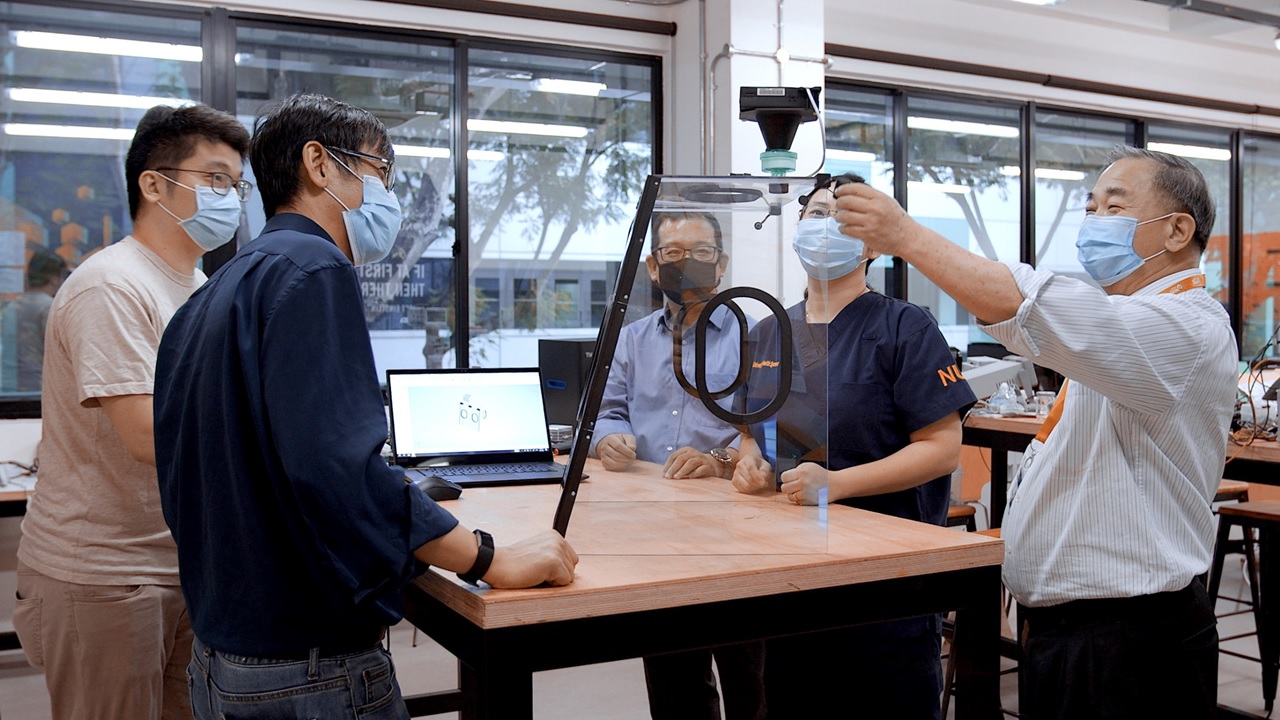Droplet and Aerosol Reducing Tent (DART)
Collaborators
This project was done in collaboration with the National University Hospital, Singapore, NUS School of Design and Environment and NUS Enterprise.
Background
The coronavirus disease 2019 (COVID-19) pandemic, subsequent worldwide disruptions, and the need to perform endotracheal intubation and extubation on patients that puts clinicians at risk of getting infected. Thus, the need to develop an additional physical barrier for reducing aerosol spread to provide an extra layer of protection for attending clinicians.
Key Problem(s)
Endotracheal intubation and extubation place healthcare staff at the most dangerous risk of exposure to COVID-19. Historically, based on experience with SARS in 2003, healthcare providers involved in endotracheal intubation were up to 6.6 times more likely to contract the disease compared with those who did not. This has implications hospital-wide – involving anaesthesiologists, operating theatre staff, intensive care unit (ICU) staff, and even first responders who are required to intubate collapsed patients on the COVID-19 general ward. This underscores the importance of conferring adequate protection against these vulnerable groups of staff, who would therefore be at significantly higher risk of contracting the disease compared to their counterparts who do not engage in aerosol generating procedures.
Solution
Through the development of DART, which acts as an addition physical barrier between the attending clinician and the patient, the cumulative risk of viral transmission to all personnel involved in aerosol generating procedures can potentially be decreased, on top of minimising aerosol spread to the environment.
Gallery

Project Contact
Yen Ching-Chiuan
didyc at nus.edu.sg
Team Members
Yen Ching-Chiuan
Raymond Hon Sui Ming
Eason Chow Wai Tung
Johanan Lau